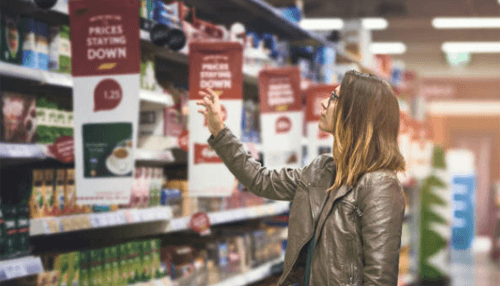Retail is highly competitive, and battling other brands for your customer’s attention can be challenging. One powerful tool for success is the point of purchase (POP) display. When thoughtfully created and strategically placed, it can capture shoppers’ attention, uplift your brand image, and increase sales.
Point of purchase is a profound element in retail marketing and promotion of products. A well-designed POP can proportionally increase a shopper’s total at the cashier’s desk. This is what every retailer wants to see, isn’t it?’
More retailers are embracing a point-of-purchase strategy to increase sales. Multi-storey department stores are often crowded. However, this may not mean much if it does not translate into sales of your target products.
Whether you already have one or are planning to put one in place, Gush Global is your best bet. Here are some critical things you should know about the point of purchase.
What is the Point of Purchase?
POP is a form of retail marketing that creates a focal point for a target product you intend to market. It is a planned area within the store that intends to capture potential customers’ attention, such as within the store’s aisle or shelves.
POP can take the form of a promotional stand, display, or bins to create excitement and arouse curiosity. It’s a turn-around point where the customer decides to add a product to their shopping basket.
POP displays have many benefits. It does not just aim to increase sales but also to improve the customer experience, enhance brand awareness, heighten customer loyalty, and improve the speed of service. That’s why digital shelf labels flood places like malls and groceries. It has replaced traditional paper price tags on retail shelves.
Types of Displays
There are three types of point of purchase, namely:
- Temporary displays
- Permanent displays
- Semi-permanent displays
A temporary display- This kind of display lasts a few months. It features some discounts, promotions, or seasonal offers.
Semi-permanent display- This is a Powerful Display intended to last for three to twelve months. It is also known as a secondary or shelf display. Temporary POP is effective when the design is keenly crafted to capture the audience’s attention.
Permanent displays – This is designed to last for several years and is usually taken by major brands. They are less common and more expensive.
There are also interactive displays that allow customers to interact with the product or brand more engagingly. This can include touchscreens, videos, or other interactive features. Today it can also come with a quick response (QR) code so customers can scan and download information about your product.
How to Plan for your Point of Purchase Display
Set goals –
Ask yourself what you want to achieve for this display. Is it to promote a specific product, increase sales, or enhance brand awareness? Once you know your goal, you can craft a design to help you target them.
Increased competition –
Cut-throat competition from other retailers should inform you of your niche. Find out what they’re doing, what works and what doesn’t. Then, improve your strategy to keep ahead of them.
Customer demand–
Thoroughly research and base their target products on consumers’ needs and wants.
Consumer expectations–
Leverage the customers’ expectations from a given product because you’re likely to make more sales.
Consider placement –
Consider where the display will be in your store. Here’s how your customer will view it. It’s best to walk around and imagine yourself as a customer. Will it compel you to buy when placed near a complementary product?
Who uses Point of Purchase?
POP is typically used in brick-and-mortar stores and intends to lure customers into making impulse purchases. However, technology is significantly implying virtual shops selling goods and services online.
How does POP affect marketing?
Every retailer should keep a keen eye on the point of purchase displayed in their marketing strategy. Any marketing tool that may enhance sales outcomes is a valid approach to influencing your target audience.
How can you gauge the success rate of the POP display?
The following may be used as success indicators.
• Impact ratio – Observe the average number of customers who look at POP for a sufficient period.
• Engagement ratio- How many customers interact with the POP by touching, asking, opening, or reading labels?
• Conversion ratio- How many clients have picked and paid for the product? However, if they pick and return it to the shelf, that’s a lost conversion.
Every retailer that wants to succeed should research the point of purchase as a critical marketing tool.



